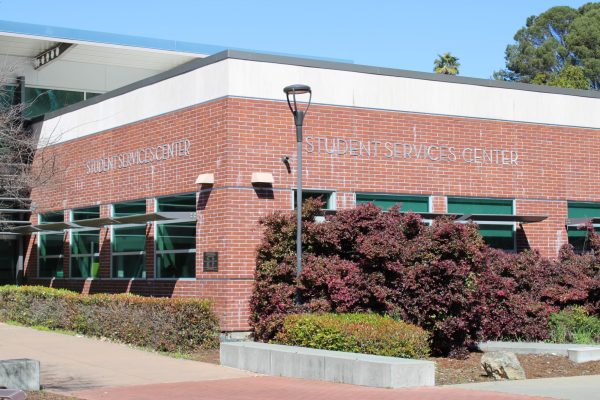District enrollment, funding plummets
Colleges borrow FTES from sister institutions to narrow funding deficit, increase costs
February 11, 2015
Although full-time equivalent student totals have been declining each semester recently, District Office and Contra Costa College administrators agree that there is no need for panic.
The colleges and district are funded by the state depending on FTES numbers. One FTES equals one student enrolled in at least 15 semester units, or multiple students taking classes that total 15 semester units. Since allocations are based off of projections from the most recent academic semester, continuous drops in funding could lead to financial penalties that could result in a deficit due to the district from a given college.
As per changes made to Senate Bill 361 in 2010, colleges in deteriorating financial situations may essentially borrow FTES funding from sister colleges in order to maintain college functions in the midst of lower apportioned funding.
SB 361 also allows for colleges to use funds from out-of-state/international student fee funds to help reduce any deficit the college may face due to dwindling FTES numbers.
At the Jan. 28 Governing Board meeting, trustees approved a $15 hike in out-of-state tuition districtwide to $269 per unit beginning with the summer session.
CCC’s FTES stood at 6,941 for the 2010-11 academic year. Since then, totals have seen a yearly decline, including the most recent FTES total for CCC’s 2013-14 year, 5,720, down slightly from 2012-13’s total of 5,724. 2012-13’s totals were 908 fewer than 2011-12’s.
“The (District Office) is very cognizant of FTES (totals) and is in continual discussions regarding it,” district Vice Chancellor and Chief Financial Officer Jonah Nicholas said.
“All campuses have seen varying degrees of FTES declines over the past few years. It’s not like any one factor (contributed to the decline) but the improving economy is a likely contributor,” he said.
The U.S. Bureau of Labor Statistics shows that Nicholas may have found the college’s reason for fluctuating FTES numbers in recent years.
BLS reports that between January 2009 and January 2011, California’s unemployment rates rose from 9.7 percent to 12.1 percent — between 2008 and 2011 CCC’s annual FTES increased yearly.
As BLS reports that recent unemployment rates in California have dropped, so have FTES totals. Unemployment rates in the state have dropped from 11 percent in January 2012 to 7.3 percent in September of last year.
“When the job market improves people go back to work and the immediate urgency for additional education and training subsides,” Nicholas said.
The Student Success task force is a statewide group of California Community College administrators and state politicians, among others, who create recommendations for community colleges to follow regarding facilitating steady enrollment and success in students.
CCC has been increasing its outreach efforts over the past few years, its most extensive being the yearly connections with local high schools, culminating in the Super Saturday event held every May.
Super Saturday is an event held for students who were a part of the colleges outreach program. They come to the campus to take a tour, receive help enrolling in classes and get help with financial aid.
Various campus staff members from the Assessment, Welcome/Transfer and Counseling offices/centers go to different high schools in the area to tell prospective college students about the benefits of coming to a community college, in hopes of them enrolling the following year.
Dean of Student Services Vicki Ferguson said that the outreach process takes almost an entire academic year, ending with Super Saturday.
“We try to tell seniors why they should choose CCC,” she said.
Ferguson said outreach efforts normally start in September and that as of now, campus staff and administrators are “gearing up” for summer and fall student enrollment applications.
Nicholas said that though FTES numbers have declined over the past few years, there is no need to panic. Ferguson agrees. She said that though the college is not in a drastic situation, the dropping enrollment numbers are worth paying attention to.
Changes to SB 361 were made at the District Office due to CCC’s deficit, which was a result of dropping FTES numbers in the early 2000s. A state deficit resulting in a drop in budget allocations for all state funded education systems ushered in the need and passage of Proposition 30 in 2012’s state election, almost immediately providing aid to all district campuses, as well as campuses up and down the state.
While reaching out to high schools over the past few years, Ferguson said that high school seniors enrolling in the college is not a problem for CCC, but that more focus needs to be on students successfully completing courses and programs.
“Retention is really where our efforts need to improve,” she said.










